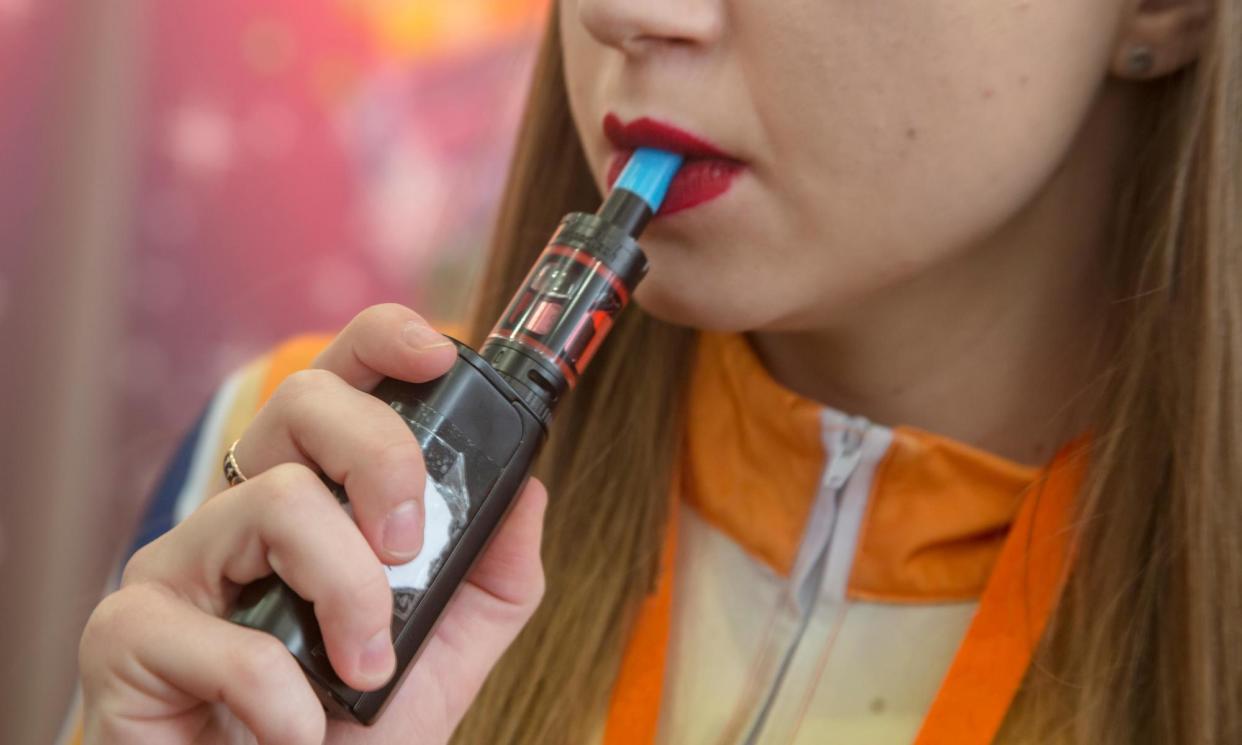‘We need to intervene’: landmark vaping study shows increased uptake among teenagers ahead of reforms

The number of students in years 7 through to 12 who have vaped in the past month has almost quadrupled in the past five years, data from the latest Australian secondary students’ alcohol and drug survey shows.
It is the largest national survey of adolescent licit and illicit substance use in Australia, with 10,314 students surveyed throughout 2022/2023.
Almost one-third (29.9%) of the students had ever vaped, the survey found, compared with 13.5% of students in 2017.
15.7% of students said they had vaped in the past month, compared with 4.2% in 2017.
4.8% of the adolescents surveyed identifying themselves as ‘regular’ vapers, defined as having vaped on 20 or more days in the past month.
Vaping was more frequent among the 16- to 17-year-olds who answered the survey, with 8.4% of the 3,022 respondents in that group regular vapers.
A smaller proportion – 3% – of adolescents identified as daily vapers.
Higher proportions of female students and older students reported ever vaping, past month vaping, regular vaping and daily vaping. Of the 4,371 females who responded to the survey, 4.2% vaped daily compared with 2.1% of the 5,288 males.
The new data comes amid an increase in vape stores opening near schools, despite reforms coming in 2024 that will see vape stores forced to close, and which will ban imports and sales of nicotine and non-nicotine vapes among general retailers. Only pharmacies will be able to supply nicotine vapes to those with a prescription.
From 1 January 2024, the ban on the importation of disposable vapes will come into effect, alongside measures that will make it easier for doctors to prescribe e-cigarettes to people looking to quit smoking. Further measures will be introduced to parliament to support enforcement of the reforms, including targeting the supply chain.
The Australian secondary students’ alcohol and drug survey is led by Cancer Council Victoria’s Centre for Behavioural Research in Cancer, and funded by the federal Department of Health and Aged care.
The head of the centre, Prof Sarah Durkin, said the five-year period since the last survey had seen significant disruption from Covid-19 and the proliferation of disposable vaping products in Australia.
Studies that track young people’s tobacco and e-cigarette use have found those who vape are around three times as likely to take up smoking later, she said.
“We need to intervene before occasional smoking or vaping becomes regular use,” Durkin said.
“Currently, 2% of students smoke at least weekly and only 5% have vaped at least 20 of the past 30 days … we have a small but rapidly closing window to act to prevent those children who are experimenting from going on to face a lifetime of nicotine addiction and health harms.”
Related: ‘Peer influence is no joke’: Australian government to fund research into youth vaping prevention
Earlier in December, the National Health and Medical Research Council allocated $2.2m towards youth vaping research, including towards developing evidence-based resources to prevent vaping use.
The Cancer Council Australia CEO, Prof Tanya Buchanan, said the latest survey data highlights the importance of incoming federal government reforms.
“Young people don’t want to smoke,” she said.
“They’ve grown up with graphic health warnings and plain packaging so think smoking is unattractive. They also consider vaping to be an entirely different behaviour to smoking but may be unaware that they are three times as likely to take up smoking if they vape.
“However, there’s a harmful and powerful industry intent on luring them into a lifetime of nicotine addiction.”

 Yahoo News
Yahoo News 
